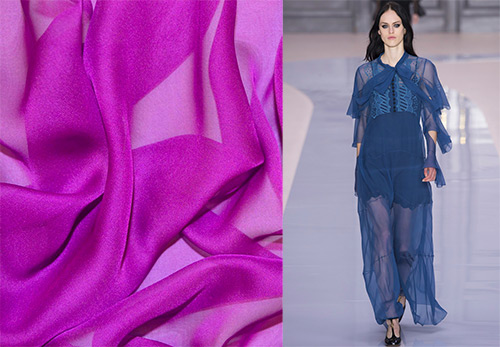Materials Science
Chintz and its history
Chintz ... Probably there is not a single woman among women who does not know this delicate and light fabric. And most likely this fabric is liked by everyone, and in the wardrobe each one must have two, three, or even more chintz dresses. After all, the lightness and attractiveness of this fabric, as well as its gentle touch to the body, is so necessary on hot days.

And so, what kind of chintz fabric?
Chintz is a lightweight cotton printed fabric made from medium staple cotton in plain weave. Dresses, sundresses, linen and children's products are sewn from chintz.

Originally chintz was made in Bengal (India), and since the 17th century - in Russia. In Europe, chintz became a fashionable fabric in the 18th century and was quite expensive because of its hand-printed printing. In the first half of the 19th century, a multi-color printing press appeared, which produced high quality printed prints, while the possibility of the first printing presses was only one or two colors.
And here it should be said about Russian calico, they were distinguished by high quality, brightness of colors, complexity of ornament. In Russian calico, there were not only geometric or plant forms, but also multi-subject complex compositions - for example, landscapes, illustrations for literary works, pastoral scenes.
The ease of manufacture has reduced the cost of calico. All segments of the population began to sew clothes from fabric, and upholstery for furniture and walls was also made. The most famous and leading manufacturers of chintz in Russia were the manufactures of the merchants Tretyakovs, Prokhorovs, Morozovs.

Chintz of the early USSR

And the most common fabrics, especially in the folk environment, at the end of the 18th - 19th centuries. there were red calico and red calico - calico with a printed print on a red background. It was a special fabric. Its coloring was carried out in a complex and rather old way by means of dyes from madder root. The ornament was applied by etching, that is, the paint destroyed the background color, and a new color was formed in this place.

Antique chintz dresses

In the 70s of the XIX century, natural paints were replaced by chemical ones (alizarin). The colors have become even brighter, and the ornament is more expressive. High quality, originality of ornaments brought world fame to Russian kumach. In 1846, the Baranov merchants founded the largest enterprise (in Soviet times, the plant named after the III International) for the production of red chintz.
The designs on their calicoes were distinguished by pure, bright colors: bright yellow, light green, blue, to which black, white and gray were added for the purpose of giving graphicity. The peculiarity of the coloring was the creation of the impression of a second layer, which resembled the reflection of the main pattern. In red calico they depicted bouquets of bright flowers, leaves and berries, baskets of fruits, garlands of flowers and grapes, images of stars, cords with tassels, as well as motifs of "bob", "cucumber" that once came to Russia from Persia and received a new interpretation. And the main flowers were cornflowers, flax, poppies, bells, kupavka.
Russian red kumach looked spectacular and majestic, the fabulousness of a magical land was felt in the patterns.


Tell friends:
Comments and Reviews
Add a comment
Rating news
Shades of clothing that make women look younger
What shades of hair make women younger: rules and photos
Funny wedding dresses - photos and ideas
12 most expensive down jackets for the winter
How to look 25 at 40: tips from supermodels
Beautiful schoolgirls
Anti-aging haircuts and hairstyles for women
Fashionable skirts for autumn and winter
Fashionable women's trousers for the cold season
Fashionable and stylish sandals for summer 2020
Spring-summer 2021
 Fashionable dresses and tops with thin spaghetti straps
Fashionable dresses and tops with thin spaghetti straps
 Bandana tops: how to wear stylishly and beautifully
Bandana tops: how to wear stylishly and beautifully
 How to put together the perfect men's wardrobe for the summer
How to put together the perfect men's wardrobe for the summer
 Fashionable shorts for spring-summer 2021
Fashionable shorts for spring-summer 2021
 Fashionable skirts for spring-summer 2021: a guide to online shopping
Fashionable skirts for spring-summer 2021: a guide to online shopping
 The most fashionable dresses spring-summer 2021: styles and colors
The most fashionable dresses spring-summer 2021: styles and colors
 Fashionable total look 2021: ideas of images and trends
Fashionable total look 2021: ideas of images and trends





